10 signs a cat is stressed and how to help
Learn how to spot these 10 signs of feline stress early so you can prevent anxiety and long-term health issues
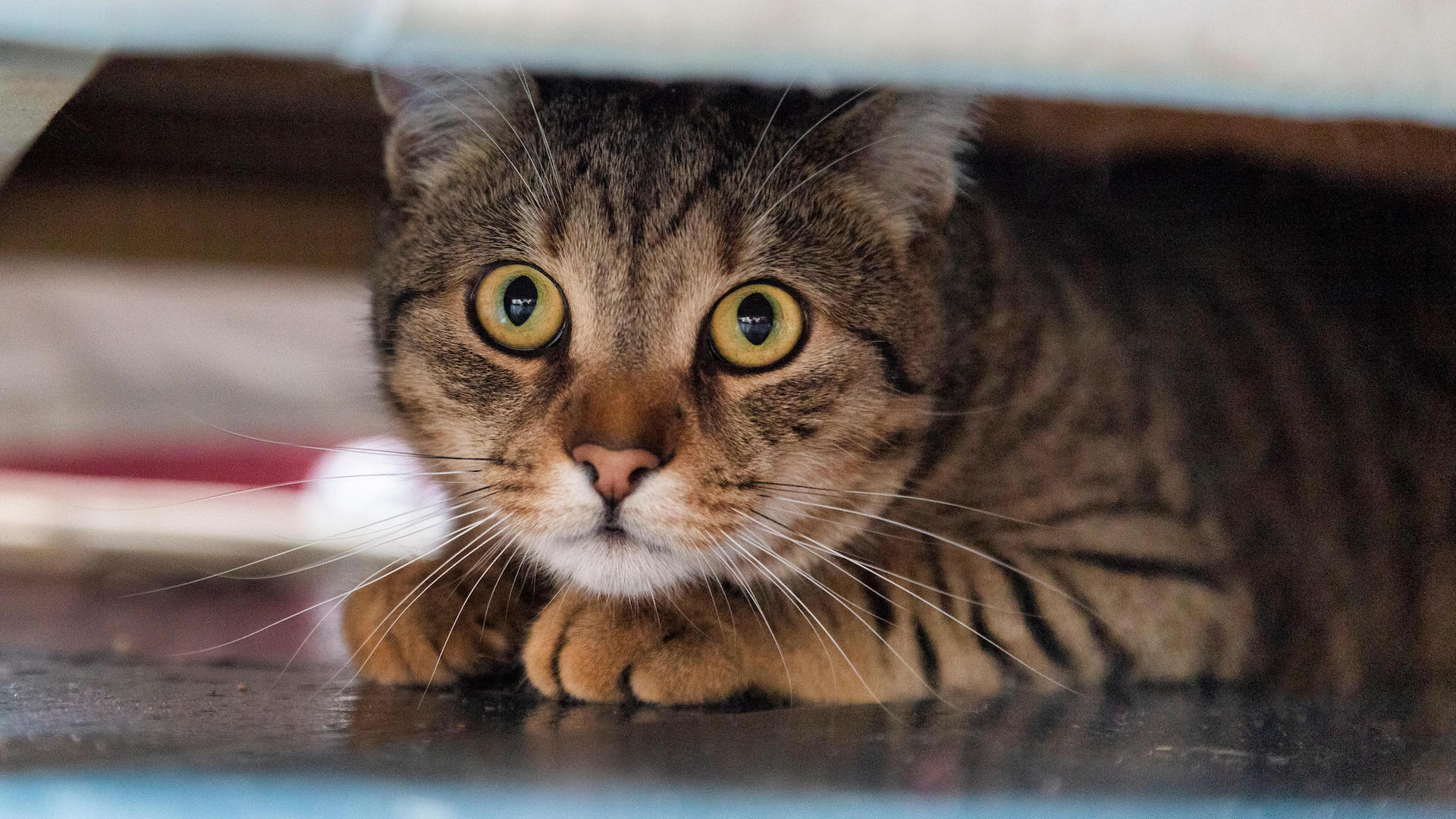
There can be definite signs a cat is stressed, and knowing what these are can help you spot the signs early and get your cat the right support.
There are different types of anxiety in cats, but all cats will show some signs of stress from time to time. Short-term stress is not a major health concern, though it should still be handled with caution.
However, as vet Dr Rebecca MacMillan points out, “Cats that experience long-term stress can really start to struggle”.
Living under the pressure of stress for days or months can overload the cat and cause them to shut down. It’s important to recognise these deeper signs so you can know how to destress your cat. Having said that, individual cats tolerate stress to differing levels.
Let’s take a look at 10 signs a cat is stressed.
Short- and long-term stress in cats
Short-term stress is typically triggered by a specific experience, such as the application of flea treatment or noisy children visiting. The cat is likely to give out some stress signals, but once the cause has gone, they go back to being their normal self.
While we can train cats in being able to cope with situations they find hard to handle, the impact of the stress isn’t lasting.
Get the best advice, tips and top tech for your beloved Pets
Long-term stress is a different story, notes Dr. MacMillan. She gives examples such as another cat moving into their territory, an extended stay at a cattery, or even abuse or neglect.
“There is not one ultimate red-flag sign in cats,” says Dr MacMillan. “All signs of stress should be taken seriously, especially as cats can be subtle creatures. Their symptoms could also depend on their personality type and previous socialization.
“It could be something as low-key as not wanting to play with you as much or sleeping more. But for some cats, their stress will be much more obvious, and you can see problems like stress-induced cystitis, aggression, and vocalization. It is therefore important to recognize what is normal behavior for your cat and to act if anything starts to change.”
Signs a cat is stressed
1. Interacting with you less
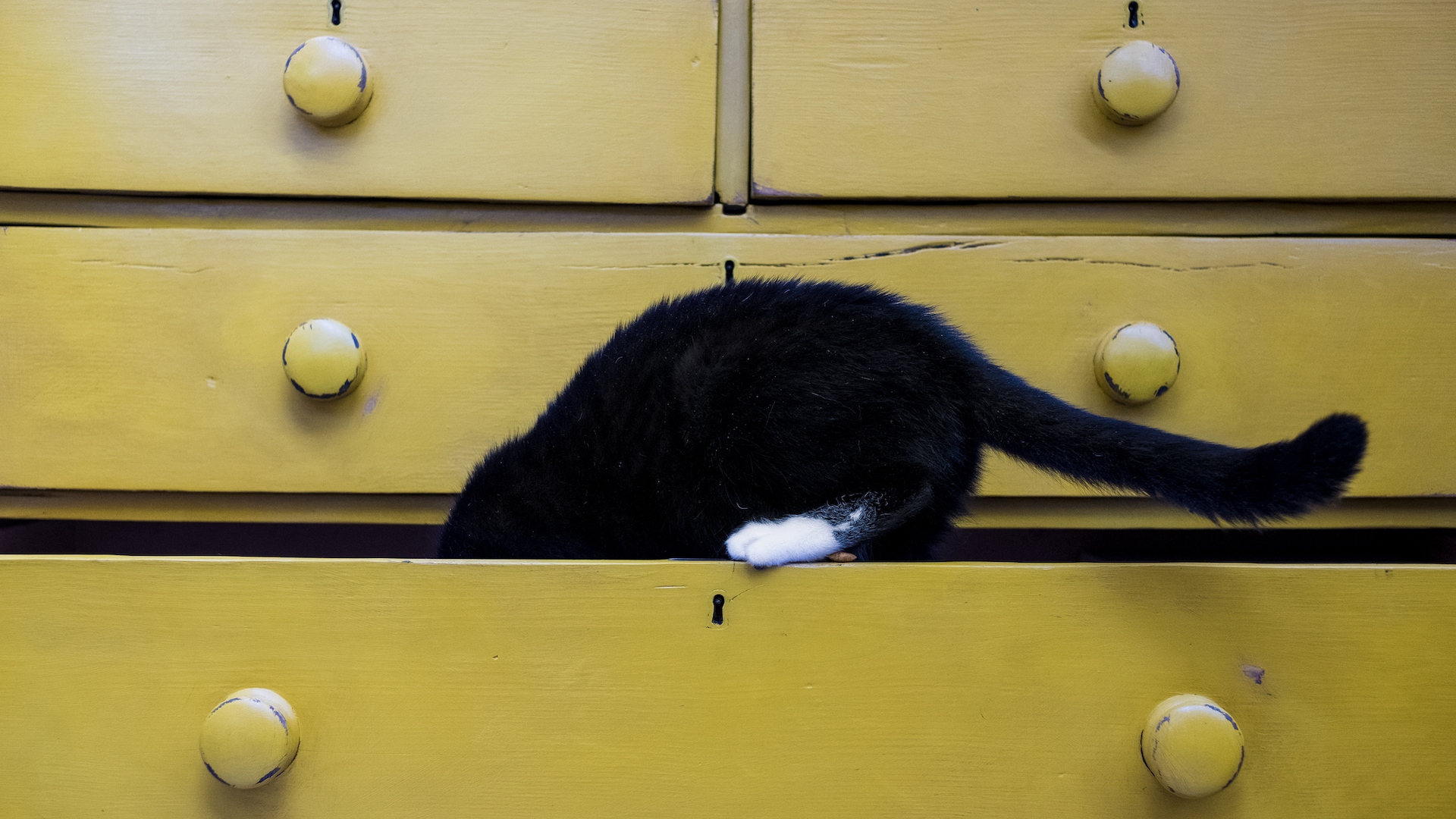
If your once cuddly cat seems to be less affectionate or is even attempting to get away from you, they are clearly communicating they are unhappy with the situation, whatever that may be.
Potential issues may arise when you are trying to do something they find stressful, such as applying flea treatment, grooming, or bathing them.
Or it may run deeper – perhaps there is a new pet in the house, and they’d rather not face up to it, and you’ll be considered guilty if you’re giving it attention.
2. Hiding away much more than usual
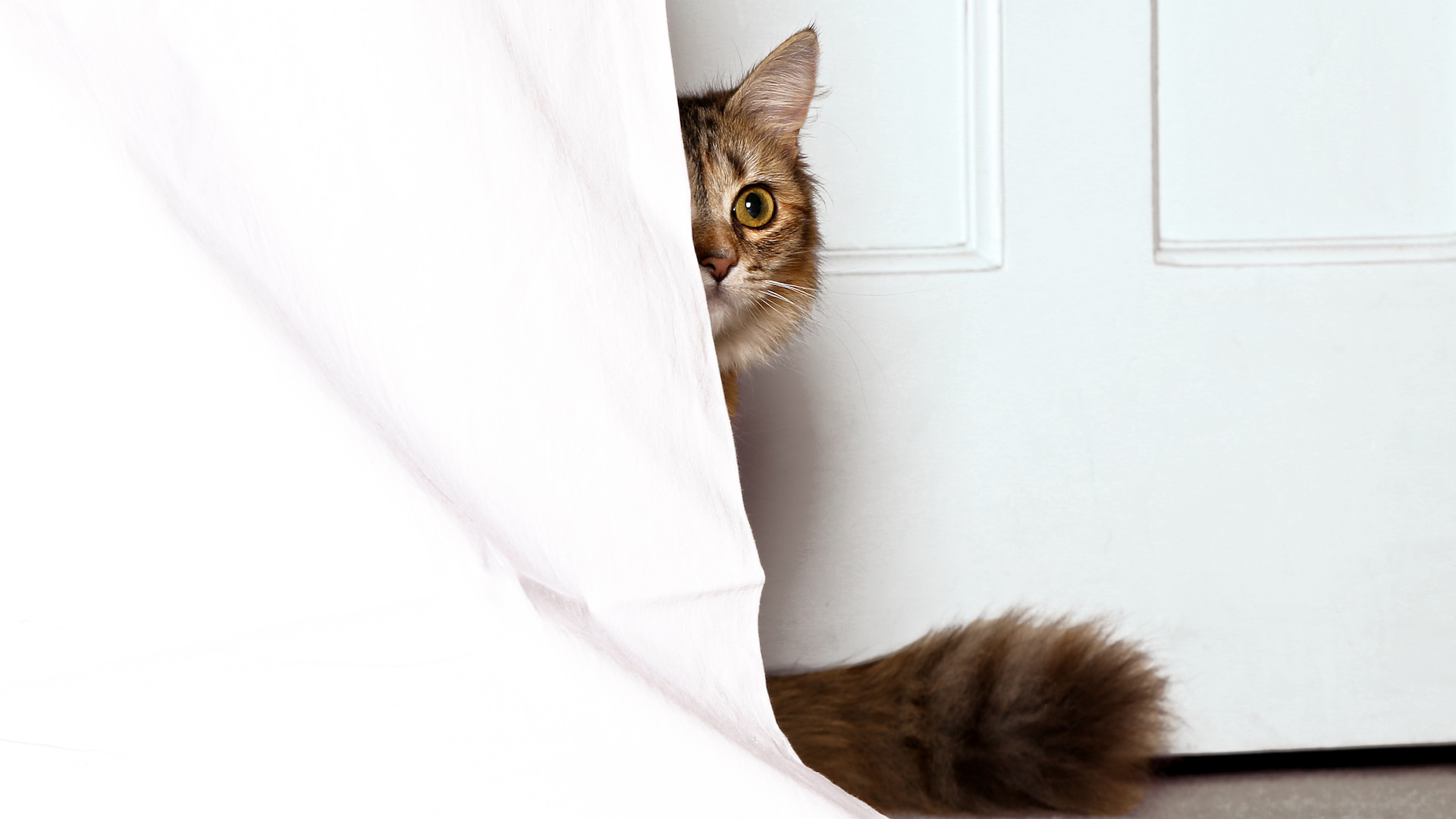
While hiding is part of normal feline behavior, a cat that is seeking quiet refuge more than usual may be showing signs of stress. They feel vulnerable out in the open, and they aren’t wanting to interact normally.
This may be due to a particular stressor, such as loud noises, or they may be in pain or feeling sick. On the other hand, they may simply be exploring or finding a new place from which to pounce.
3. Inappropriate bathroom habits
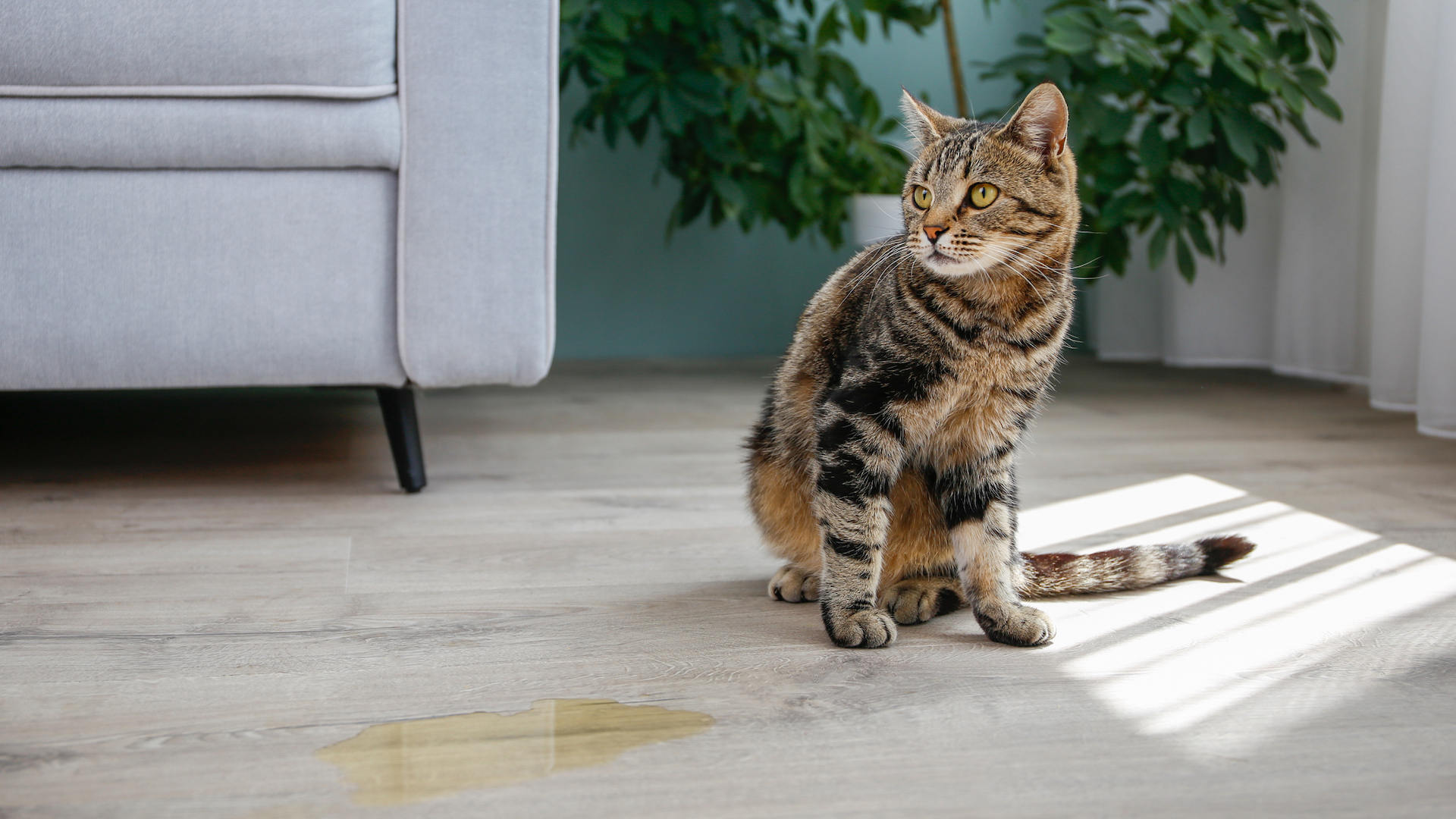
A cat peeing outside the litter box could be a sign of stress. Especially, if a cat that has previously been well house-trained suddenly starts urinating either on the floor or in its carrier, something’s up.
The first stop should be the vet, as there could be an underlying medical reason for the incontinence. However, peeing outside their litter tray can also be a sign of stress.
This is often the result of a new cat in the house – the older resident might be trying to mark their territory, or they could feel intimidated by the new cat’s presence and be wary of using the litter box.
4. Alterations in their sleeping patterns

Cats are capricious creatures, and they don’t always follow set patterns for sleeping. One thing’s for sure, they do like to sleep a lot. But if a cat is feeling on high alert or is in pain, he may sleep less, and his sleep quality may be more fitful than a healthy, relaxed cat.
He may also try to find new, “safer” places to sleep where he feels less vulnerable. By monitoring what is normal for your individual cat, you will quickly be able to tell if something’s awry.
5. Changes in appetite
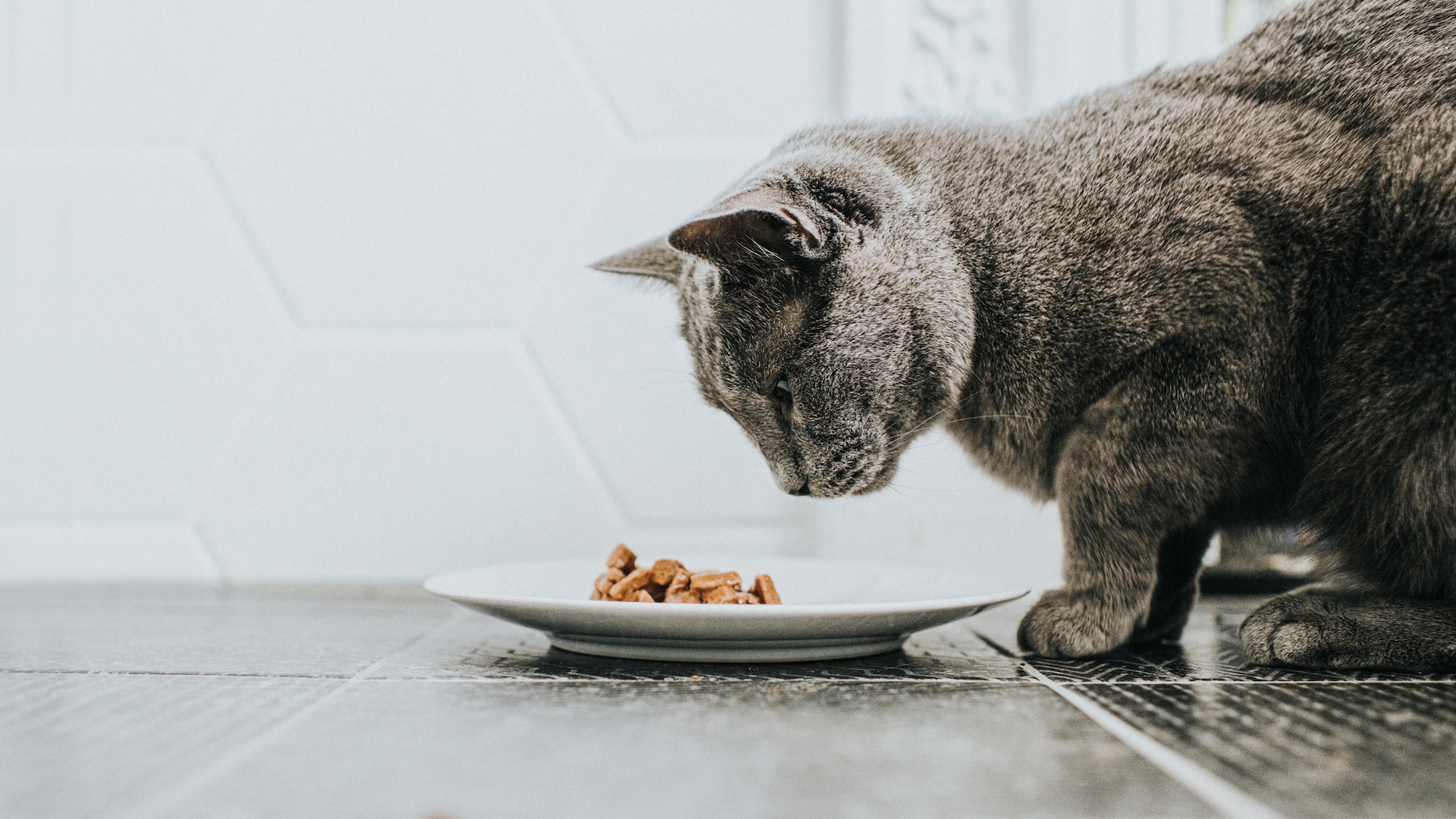
If your cat is not eating, or eating more or less than usual, he may be feeling stressed. Like humans, stress can have a significant effect on their eating habits. They may lose their appetite when they’re feeling fretful, or boredom may even cause them to comfort-eat.
However, stress is far more likely to cause inappetence as the stress hormones affect the digestive tract. If a cat is in fight or flight mode, its need to eat is its last concern.
A lack of appetite can also often signal a medical problem, which itself is a stressor.
6. Overgrooming themselves
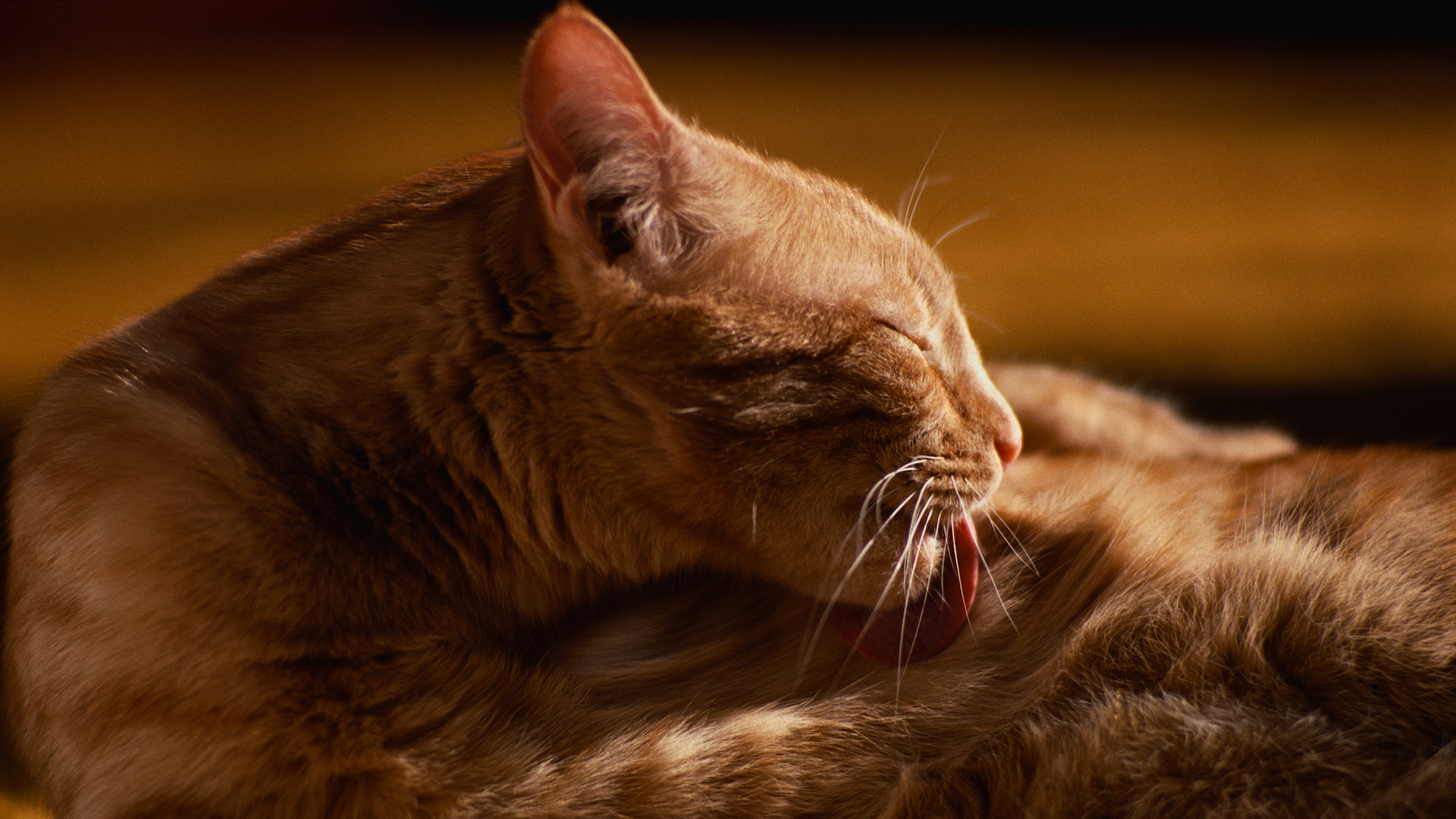
Cats self-groom a lot, in fact, they spend much of the time (when they’re not sleeping) beautifying themselves. They’re not only cleaning their fur but getting rid of tangles, loose hair, and dirt.
But when this grooming becomes obsessive, and they lick their fur to the point of losing hair and you start noticing bald patches, this is the sign that stress might be a factor.
The excessive grooming could be due to stress, pain, allergy, itchiness, infection, or parasites – it’s definitely one to monitor.
7. Changes in facial expression
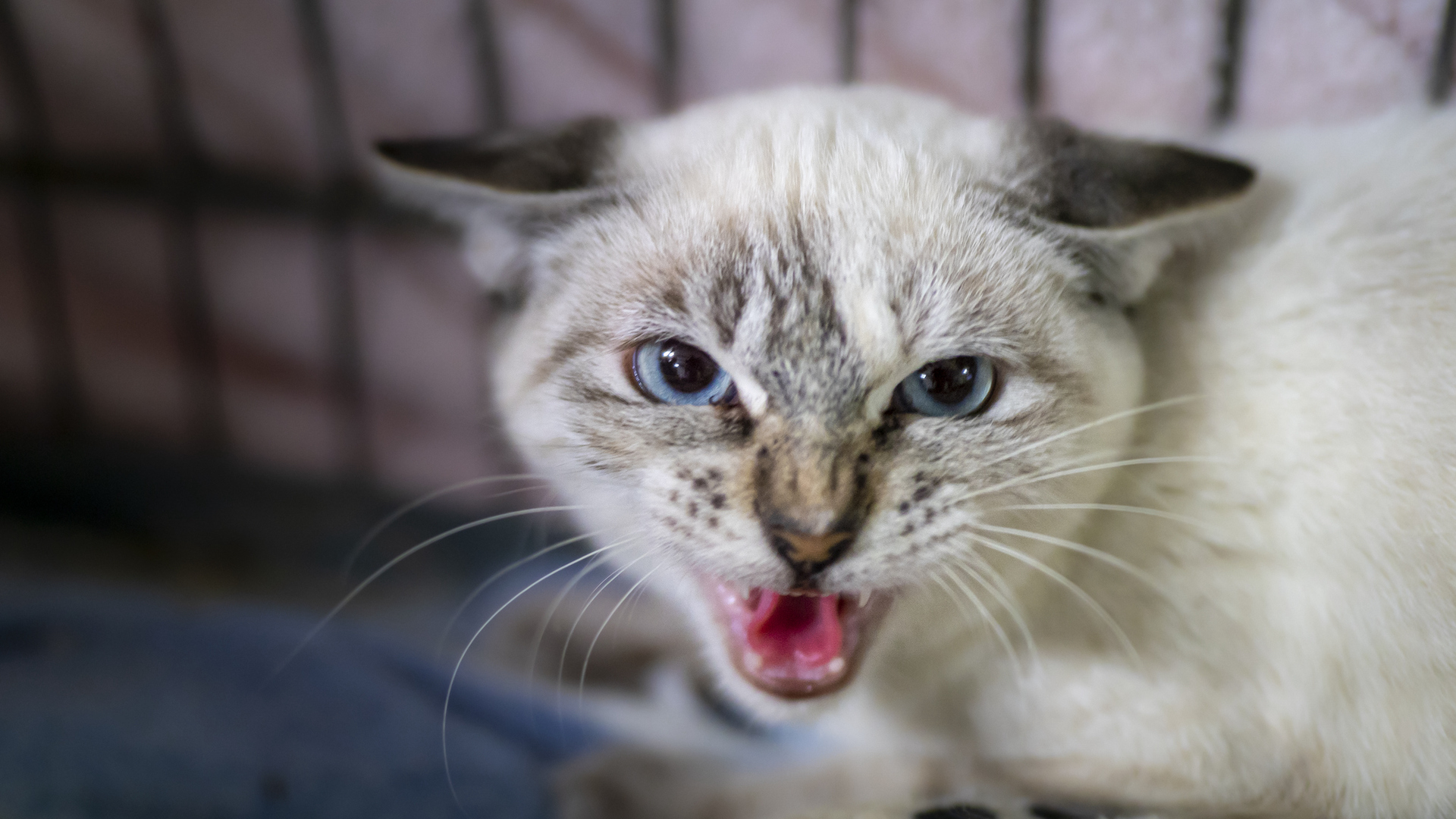
Cats are masters of self-expression; it’s like they can tell you exactly what they think of a situation.
“Watch out for stress signs, such as flattened ears, and eyes wide open with large pupils”, advises Dr MacMillan.
The way they hold their whiskers may also indicate they are on high alert.
8. A defensive posture
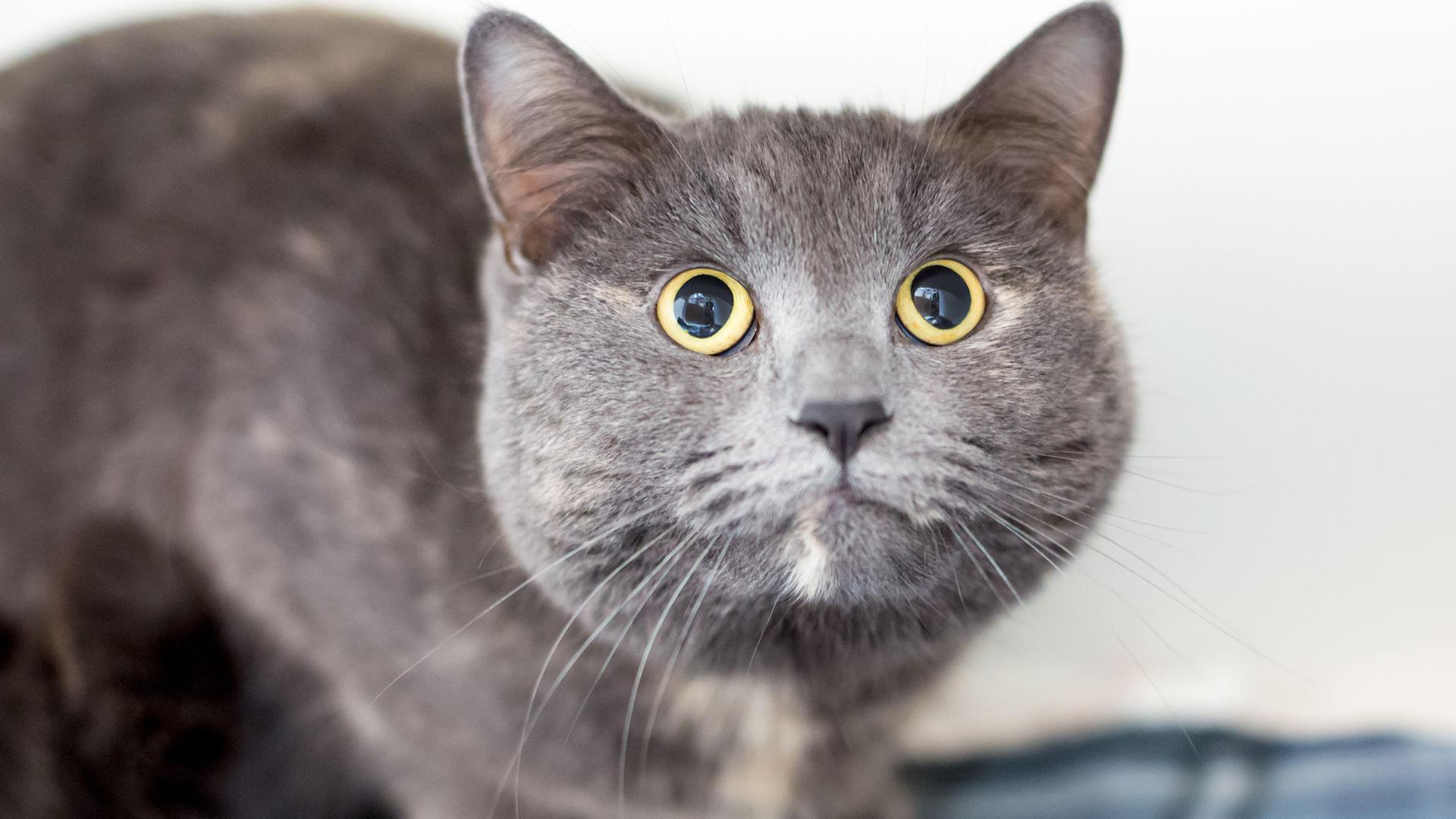
Dr MacMillan highlights that “crouched or tense posture, with a stiff, swishing tail indicates that a cat feels very stressed and defensive”.
Any change of posture could be a warning sign. For example, a cat that is arching their back, standing on tiptoes is signalling anxiety or a response to a potential threat.
9. Hissing or growling
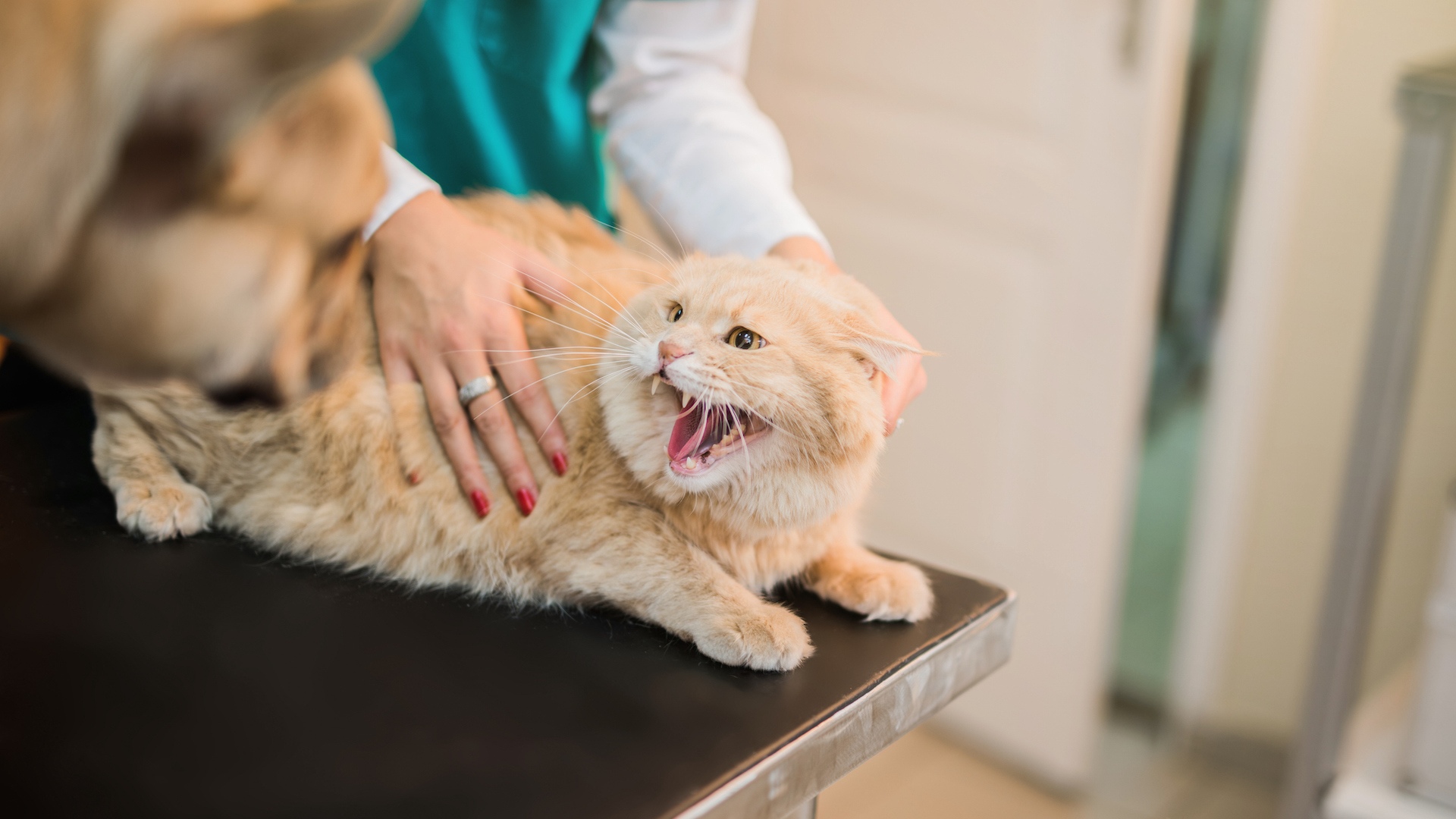
Whether or not you agree with your cat about perceived threats, if they hiss or growl at anything, it shows that it is feeling very stressed and giving a clear warning to back off.
Typical stress-inducing threats might be other animals, such as dogs or vet visits. Their hiss is basically their defensive mechanism.
10. Aggression
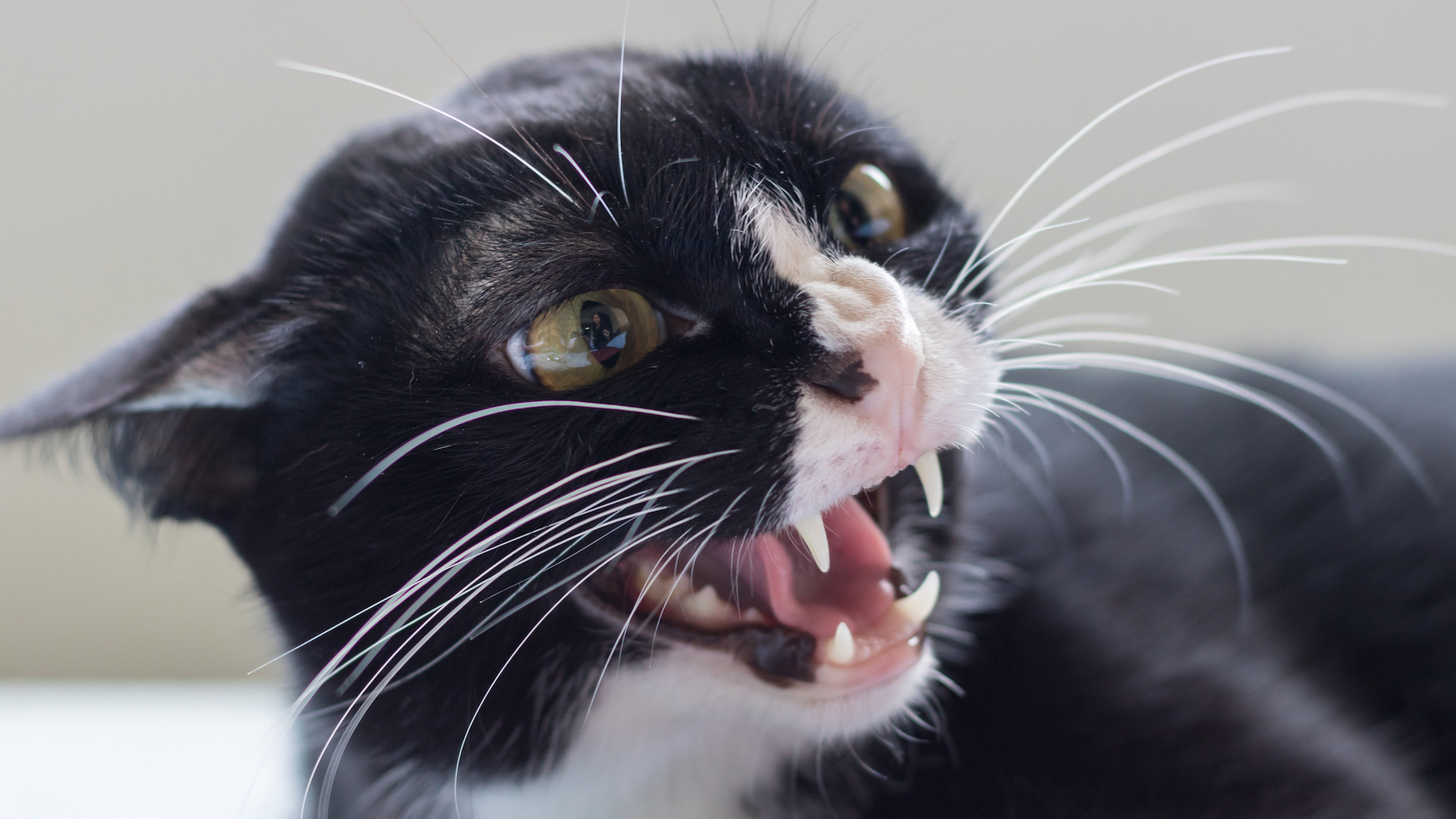
Dr MacMillan pinpoints aggression as a “sign that your cat is feeling severely stressed and has escalated their behavior accordingly.”
Some cats are naturally more on their guard than others and quicker to resort to aggressive tactics, but any scratching or biting should be of concern, particularly if they are unable to escape from a situation that they find threatening.
Read next: Signs of a happy cat and how to keep a cat calm at the vet
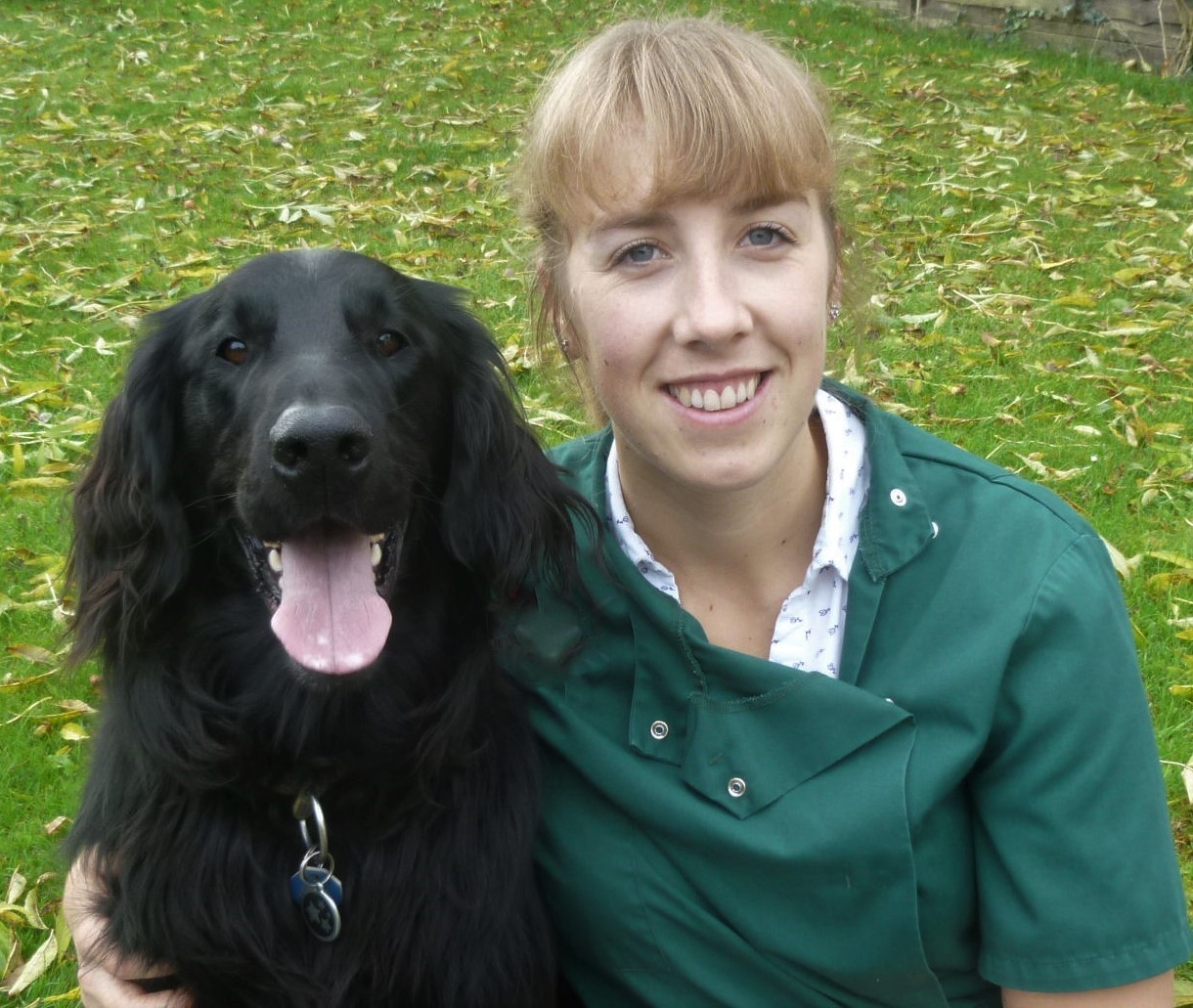
Rebecca is a veterinary surgeon who graduated in 2009 from the Royal Veterinary College in London. She has a wealth of experience in first opinion small animal practice, having done a mixture of day-to-day routine work, on-call emergency duties and managerial roles over the years. Rebecca enjoys medicine in particular and she is proud to have recently achieved a BSAVA postgraduate certificate in small animal medicine (with commendation).
She writes on various feline and canine topics, including behavior, nutrition, and health. Outside of work and writing she enjoys walking her own dog, spending time with her young family and baking!
Edited by Georgia Guerin and Alexis de Leaver
Martha is an experienced journalist working in both print and digital media. She specializes in the canine, equine and rural sphere where she has covered a wide range of topics from cloning animals and the ingredients for a perfect yard dog, to helping owners find the best canine GPS trackers on the market. When she’s not busy writing about dogs and horses, she’ll be found either aboard a horse or looking after the menagerie of pets in her care.
